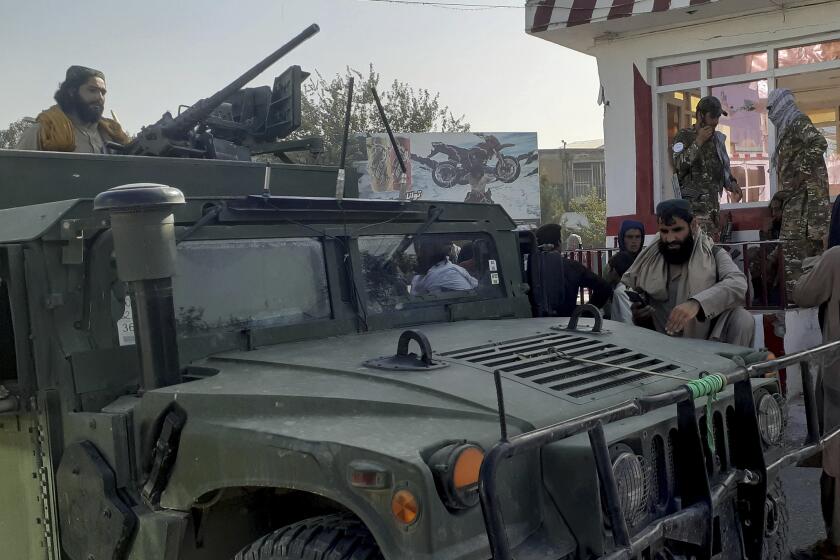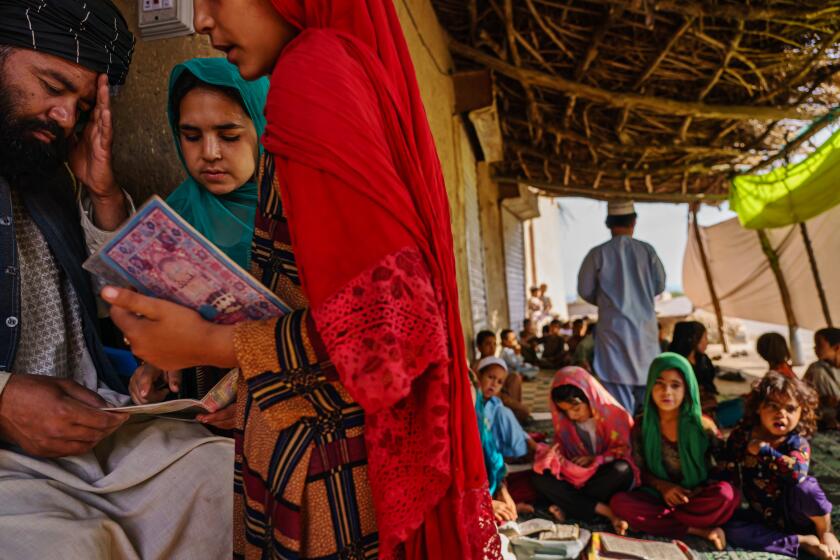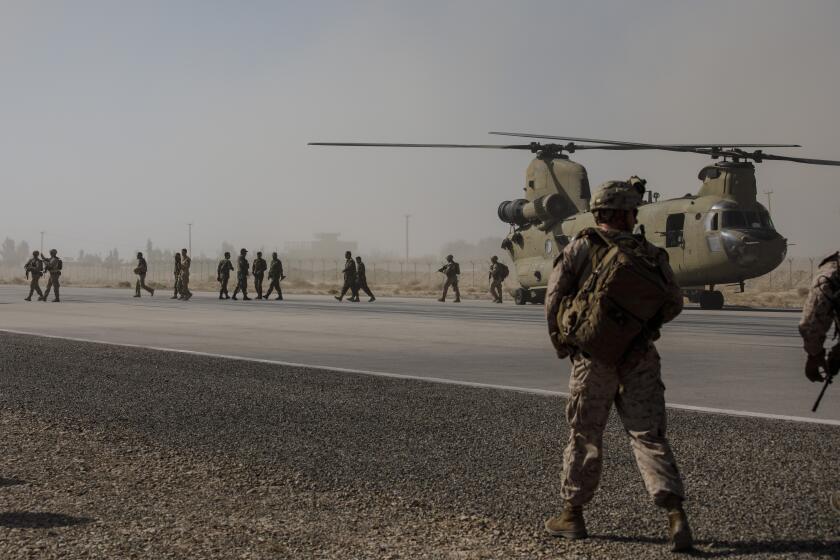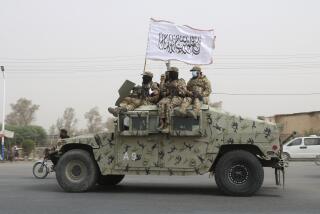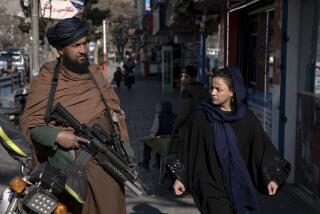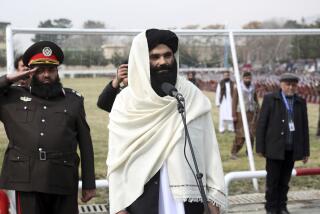Taliban completes northeast blitz as more Afghan cities fall
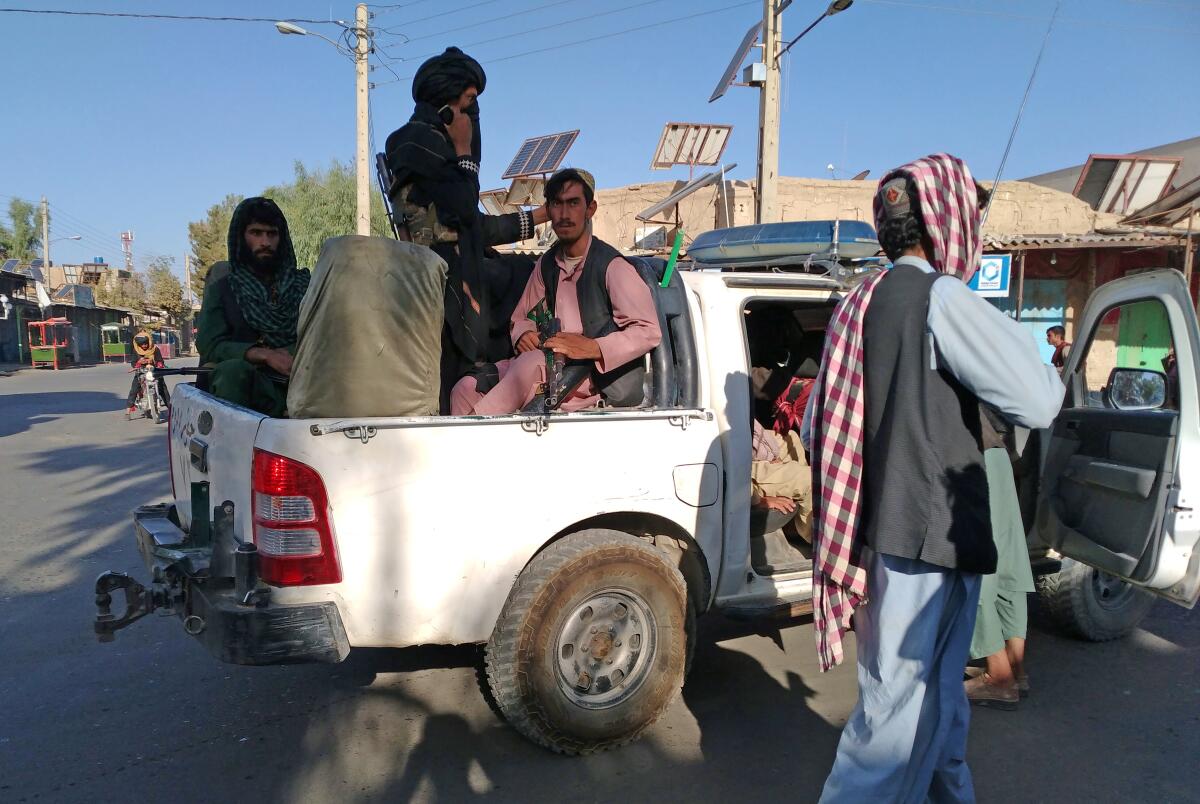
KABUL, Afghanistan — The Taliban seized three more provincial capitals and a local army headquarters Wednesday to complete a blitz across Afghanistan’s northeast, giving the insurgent group control of two-thirds of the nation as the U.S. and NATO complete their withdrawal of forces.
The fall of the capitals of Badakhshan, Baghlan and Farah provinces put increasing pressure on the country’s central government to stem the tide of the advance, even as it lost a major base in Kunduz. Afghan President Ashraf Ghani rushed to Balkh province, already surrounded by Taliban-held territory, to seek help from warlords linked to allegations of atrocities and corruption. He also replaced his army chief of staff.
Although the capital, Kabul, has not been directly threatened in the militants’ advance, the stunning speed of the offensive raises questions of how long the Afghan government can keep its grip on the slivers of the country it still controls. The government may eventually be forced to pull back to defend the capital and just a few other cities.
“I think what I would say to President Ghani is if you remain spread out everywhere, the Taliban will be able to continue to apply their current approach with success,” warned Ben Barry, the senior fellow for land warfare at the International Institute for Strategic Studies. “You’ve got to do a bit more than stopping the Taliban. You’ve got to show you can push them back.”
The success of the Taliban offensive also calls into question whether the militants would ever rejoin long-stalled peace talks in Qatar aimed at moving Afghanistan toward an inclusive interim administration, as the West hoped. Instead, the Taliban could come to power by force — or the country could splinter into factional fighting like it did after the Soviet Union’s withdrawal in 1989.
The multiple fronts of the fighting have stretched the government’s special operations forces — while regular troops have often fled the battlefield — and the violence has pushed thousands of civilians to seek safety in the capital.
The U.S. military, which plans to complete its withdrawal by the end of the month, has conducted some airstrikes but largely has avoided involving itself in the ground campaign.
The latest U.S. military intelligence assessment is that Kabul could come under insurgent pressure within 30 days and that if current trends hold, the Taliban could gain full control of the country within a couple of months, according to a U.S. defense official, who discussed the internal assessment on condition of anonymity.
Meanwhile, Turkish President Recep Tayyip Erdogan — whose country is contemplating running and protecting Kabul airport after U.S. and North Atlantic Treaty Organization forces withdraw — told CNN-Turk television that he may meet with the Taliban leadership.
“If we don’t bring them under control at the highest level ... it will not be possible for us to ensure peace in Afghanistan,” Erdogan said.
Humayoon Shahidzada, a lawmaker from Farah, the capital of Farah province, confirmed Wednesday to the Associated Press the fall of his city.
In Farah province, Taliban fighters dragged the shoeless, bloody corpse of one Afghan security force member through the street, shouting: “God is great!” Insurgents carrying M-16 rifles and driving Humvees and Ford pickup trucks donated to the Afghan government by the United States rolled through the streets of the province’s capital.
“The situation is under control in the city, our mujahedin are patrolling in the city,” said one Taliban fighter who did not give his name, referring to his fellow insurgents as “holy warriors.”
The crackle of automatic weapons fire continued throughout the day in Farah.
Taliban fighters have seized several provincial capitals in recent days, marking a ‘deadlier and more destructive phase’ of the war in Afghanistan.
Hujatullah Kheradmand, a lawmaker from Badakhshan, said the Taliban had seized his province’s capital, Faizabad. An Afghan official, who requested anonymity to speak about an unacknowledged loss, said Baghlan’s capital, Pul-i-Khumri, also fell.
The Afghan government and military did not respond to repeated requests for comment about the losses.
The insurgents earlier captured six other provincial capitals in the country in less than a week.
On Wednesday, the headquarters of the Afghan national army’s 217th Corps at Kunduz airport fell to the Taliban, according to Ghulam Rabani Rabani, a provincial council member in Kunduz, and lawmaker Shah Khan Sherzad. The insurgents posted video that they said showed surrendering troops.
The province’s capital, also called Kunduz, was already among those seized, and the capture of the base now puts the country’s northeast firmly in Taliban hands.
It wasn’t immediately clear what equipment was left behind for the insurgents, though a Taliban video showed them parading in Humvees and pickup trucks. Another video showed fighters on the airport’s tarmac next to an attack helicopter without rotor blades.
In the southern province of Helmand, where the Taliban control nearly all of the capital, Lashkar Gar, a suicide car bomber targeted the government-held police headquarters, provincial council leader Attaullah Afghan said. The building has been under siege for two weeks.
As U.S. forces pull out from Afghanistan, the Taliban is in the ascendant — and threatening to retake the city that was its former spiritual capital.
The rapid fall of wide swaths of the country raises fears that the brutal tactics the Taliban used to rule Afghanistan previously will also return, including severe curtailing of women’s rights. Some civilians who have fled Taliban advances have said that the insurgents imposed repressive restrictions on women and burned down schools, and there have been reports of revenge killings.
In the face of Afghanistan’s rapidly deteriorating situation, Germany and the Netherlands both announced Wednesday that they would suspend deportations to the country.
Speaking to journalists Tuesday, a senior European Union official said the insurgents held about 230 of the more than 400 districts in Afghanistan. The official described an additional 65 districts as under government control while the rest were contested. The official spoke on condition of anonymity to discuss the internal figures.
In addition to the northeast, much of the north has also fallen to the Taliban, except for Balkh province. There, warlords Abdul Rashid Dostum, Atta Mohammad Noor and Mohammad Mohaqiq planned to mobilize forces in support of the Afghan government to push back the Taliban. Dostum in particular has a troubled past, facing investigations after the 2001 U.S.-led invasion. He is accused of killing hundreds of Taliban fighters last year by letting them suffocate in sealed shipping containers.
On Wednesday, Dostum said that the Taliban “won’t be able to leave north and will face the same fate” as the suffocated troops.
U.S. defense of its Afghanistan pullout is based on a conviction that education and development gains are irreversible. But reality is very different.
Ghani meanwhile ordered Gen. Hibatullah Alizai to replace Gen. Wali Ahmadzai as the Afghan army chief of staff, according to an Afghan official who spoke to the AP and local media reports. The Defense Ministry official spoke on condition of anonymity because the decision had yet to be made public.
Alizai was the commander of the Afghan army’s Special Operations Corps — the elite troops that, along with the air force, have been forced to do most of the fighting as regular forces have collapsed.
Gambrell reported from Dubai, United Arab Emirates.
More to Read
Sign up for Essential California
The most important California stories and recommendations in your inbox every morning.
You may occasionally receive promotional content from the Los Angeles Times.
